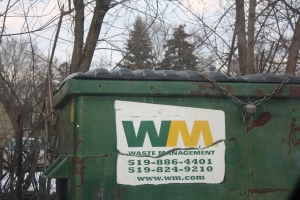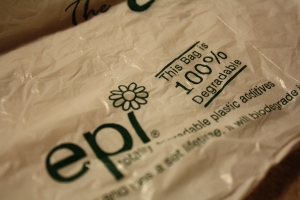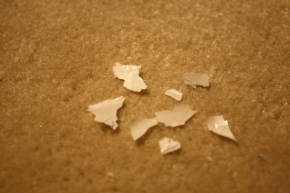I recently heard that this Friday, today, was Buy Nothing Day – something I thought would be great to participate in being I am something of an anti-consumerist. It had me so excited, I decided to do a story on it for Spoke, the Conestoga College newspaper that I write for. I’d read on the Internet about the things groups of people have done in the past, such as a “whirly mart” (wheeling empty shopping carts around Wal-Mart in a conga line) and standing outside a store offering to cut up people’s credit cards. I decided I’d head straight over to Fairview Park Mall, my local mall, after work and see what was going on.
So what did I find when I got there?
Ironically, the only thing that made this day at the mall different than any other day was that there were a lot more people buying stuff than any other day. Disappointing? Absolutely, but it wasn’t totally unexpected. I don’t know why, but Buy Nothing Day happens to fall on the same day as what they in the States call “Black Friday,” the biggest shopping day of the year, not counting the last few days before Christmas. Everyone I talked to had no idea that today was Buy Nothing Day. Sure, everyone knew it was Black Friday because it’s advertised like crazy. Buy Nothing Day? Forget that, I gotta get my Christmas shopping done and take advantage of these unreal one-day sales while I can.
Which reminds me: few of the shoppers I saw today looked like they had any sign of Christmas cheer. And who could blame them? The mall was a zoo. Is it worth dealing with the crowd, the line-ups, the rain checks, to save money on something you don’t really need?
My answer is no! I don’t believe we can’t go a day without shopping. I support the idea of Buy Nothing Day, of buying nothing for one day just to make a statement to the corporations demanding we buy their stuff. The only thing that I would change would be to hold it on another day. Black Friday is too irrestible for most consumers.
I felt like the lone participant in Buy Nothing Day, bringing a bag lunch to eat in the food court (I did end up buying something later – bags for the green bin. But come on, we’d been out of them for three days and it was getting gross). The feeling of not buying anything (at least until later) gave me a peaceful feeling; at least, the most peaceful feeling you can get in a packed mall on the biggest shopping day of the year.




